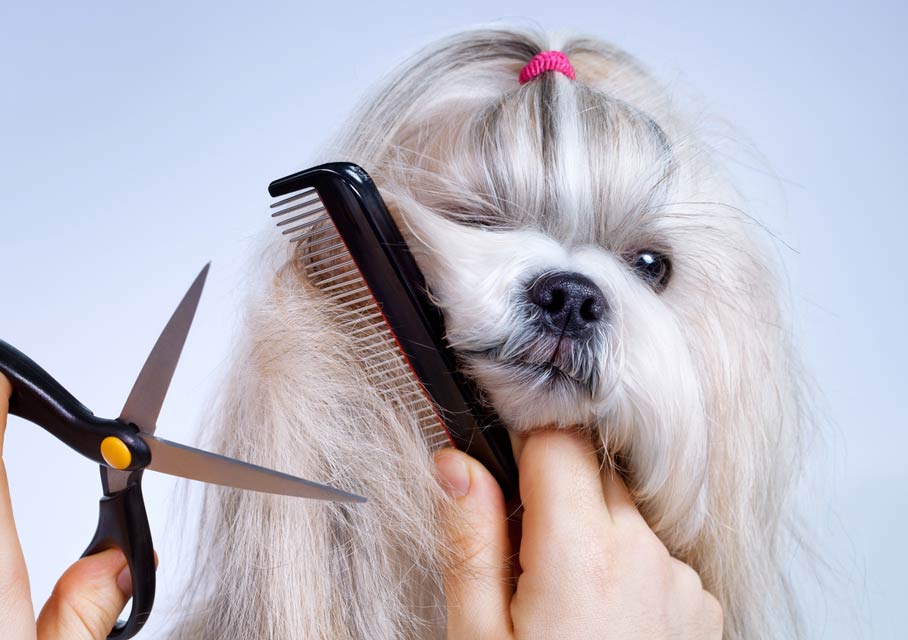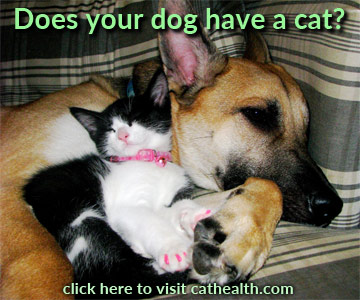How to Help Your Dog Get a Better Grooming

Some dogs require grooming every six to eight weeks while others only need a bath once in a while. Many dogs fall somewhere in between these two extremes, needing their nails trimmed, their ears cleaned, or their anal glands expressed periodically.
Often, it's a good idea to take your dog to a groomer for such procedures because they have the experience and training to do a great job. However, some dogs can be quite nervous or even uncooperative with the groomer. There are some ways you can help both your groomer and your dog with this situation. You can help your dog get used to both grooming and the groomer.
Work with Your Dog at Home
If you get a puppy or a new dog, immediately begin working with her at home to get her used to some of the things a groomer will need to do. For example, make sure that you handle your new dog's paws a lot, including each toe and the nails. If you're able to trim your dog's nails at home, do so at least once a week to help her get used to that procedure.
You can get your new puppy accustomed to the idea of taking baths by letting her play with a puppy toy in the bathtub with no water in it. You can let her sniff at and investigate the puppy shampoo and the brushes, too, and once she's comfortable with those things, you can turn the water on at a trickle to start to get her used to that.
If you have a dog that needs haircuts every six to eight weeks, you can help both your dog and the groomer by brushing your dog in between those trims. That will not only continue to acclimate her to the process of being groomed, but it will also help reduce knots or mats that might form in the hair and make the next haircut more difficult for the groomer and uncomfortable for your dog.
Work with Your Dog at the Groomer's Office
You can also help your dog do well with the groomer by taking her in for some happy visits before her first grooming appointment. Of course, you'll need to check with the groomer and determine when a good time would be to do it, but many groomers are happy to accommodate this practice because it helps puppies and older dogs feel calmer when it's actually time for their real grooming appointment.
During the happy visits, let your dog visit the grooming room and sit on the table while you give her treats. Take a favorite toy with you so the groomer can play with her. Do everything you can to associate pleasant, fun feelings with the groomer and the grooming facility.
Before a real grooming appointment, make sure that your dog has had a chance to go for a walk and go potty. Needing to go might make her antsier and less cooperative during the grooming.
For some dogs, especially puppies, it can help to have a rousing play session before a grooming appointment. This can get some extra energy out of your dog and allow her to sit more still and cooperate a little better during her bath and trimming.
Although it helps for you to be there during happy visits, it is generally not a good idea for you to stay around during your dog's actual grooming appointments. Many dogs do better with the groomer when their owner is not around because when they are, the dog often tries to get to the owner rather than sitting still to be groomed.
Stay Calm Yourself
As with many aspects of dog training and dealing with dogs in general, it's best to stay as calm as you can yourself because your dog will detect that you're upset and be more likely to become scared herself.
Speak to your dog with a calm, happy voice before the grooming appointment and as you drop her off. This will send her the message that the groomer is great and she will be having a fun, positive experience.
You May Also Like These Articles:
Should I Bathe My Dog Regularly?
Dog Shaving: Helpful or Harmful?
Dog Training Tips: Using Treats Properly
Disclaimer: This website is not intended to replace professional consultation, diagnosis, or treatment by a licensed veterinarian. If you require any veterinary related advice, contact your veterinarian promptly. Information at DogHealth.com is exclusively of a general reference nature. Do not disregard veterinary advice or delay treatment as a result of accessing information at this site. Just Answer is an external service not affiliated with DogHealth.com.
Notice: Ask-a-Vet is an affiliated service for those who wish to speak with a veterinary professional about their pet's specific condition. Initially, a bot will ask questions to determine the general nature of your concern. Then, you will be transferred to a human. There is a charge for the service if you choose to connect to a veterinarian. Ask-a-Vet is not manned by the staff or owners of DogHealth.com, and the advice given should not delay or replace a visit to your veterinarian.



